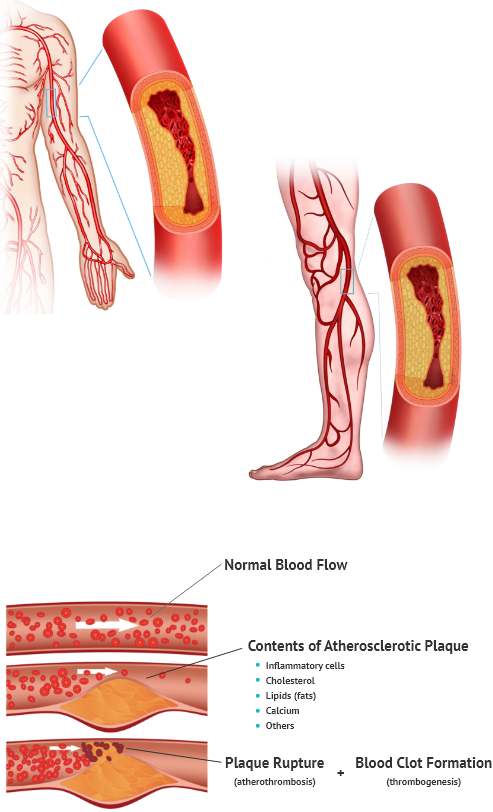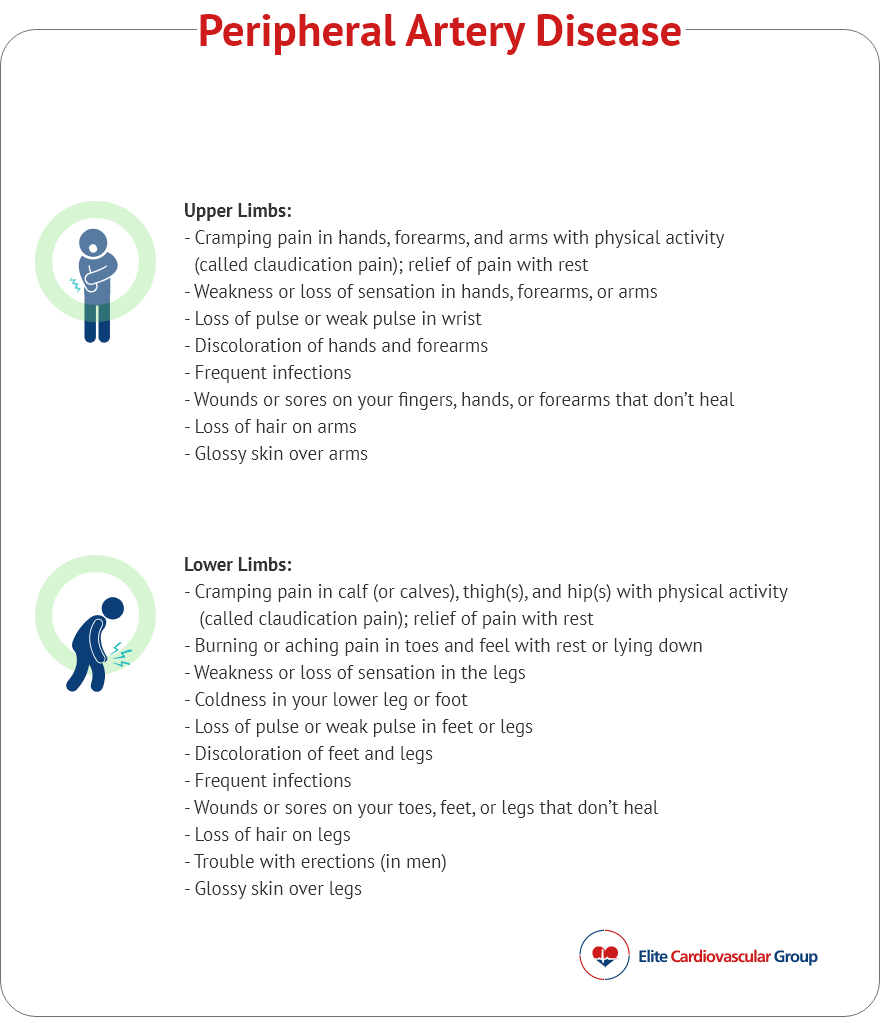Peripheral Artery Disease

Also known as: Peripheral arterial disease (PAD), peripheral vascular disease (PVD), or hardening of arteries
Peripheral arteries supply blood to the upper and lower limbs (ex: arms and legs) of the body. Over the course of time, inflammatory substances and cholesterol in the body build up in the artery walls forming atherosclerosis (also known as plaque). As plaque continues to build up, the arteries gradually hardens and becomes narrower. This ultimately leads to the reduced blood flow (which carries oxygen and essential nutrients) to your limbs, heart, and brain. When plaque builds up in the arteries of the arms and legs (more often legs), this is called peripheral artery disease.
If a large part of a peripheral artery is filled with atherosclerotic plaque, the blood flow can be decreased significantly. This decreased blood flow can cause pain (called claudication pain).
If a piece of this plaque is broken off (called atherothrombosis) it can cause a blockage. At the site of the break-off, a blood clot may form (a process called thrombogenesis) which can worsen the blockage.
In general, men are at a higher risk than women for peripheral arterial disease (PAD). Smoking and diabetes are significant risk factors for PAD, as well as the common risk factors for heart disease such as kidney disease, and high cholesterol.
Due to atherosclerosis in the peripheral arteries of the upper and lower limbs

Note: Not everyone may experience all symptoms
- Smoking or the use of other tobacco products (smoking increases your risk of PAD fourfold)
- Diabetes
- Age >50
- Kidney Disease
- Race (African Americans are also at higher risk for PAD than Caucasians by twofold)
- Obesity
- Sedentary lifestyle
- Eating a diet low in fruits and vegetables
- High LDL (bad cholesterol)
- Low HDL (good cholesterol)
- High blood pressure
- Family history
- Heavy alcohol use
- Illicit drug use
- Autoimmune diseases (Rheumatoid Arthritis, Lupus, etc.)
- Injury to your arms or legs
- Radiation exposure
Show references
Aronow WS. Peripheral arterial disease of the lower extremities. Arch Med Sci. 2012;8(2):375-388. doi:10.5114/aoms.2012.28568
Writing Committee Members, Gerhard-Herman MD, Gornik HL, et al. 2016 AHA/ACC Guideline on the Management of Patients with Lower Extremity Peripheral Artery Disease: Executive Summary. Vasc Med. 2017;22(3):NP1-NP43. doi:10.1177/1358863X17701592
Weragoda J, Seneviratne R, Weerasinghe MC, Wijeyaratne SM. Risk factors of peripheral arterial disease: a case control study in Sri Lanka. BMC Res Notes. 2016;9(1):508. Published 2016 Dec 9. doi:10.1186/s13104-016-2314-x
https://www.cardiosmart.org/topics/peripheral-artery-disease/what-increases-your-risk
